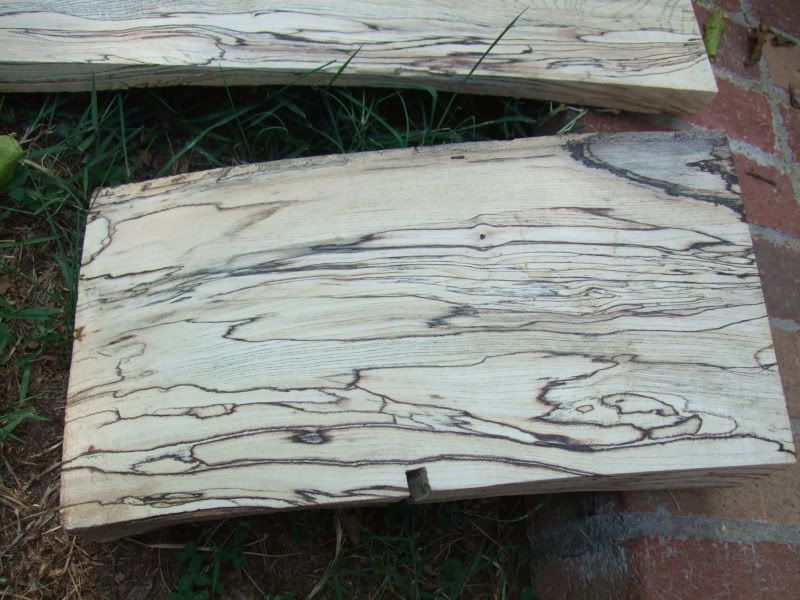I have some very nice fiddleback spalted maple I've had for many years - having got the bug to make a mandolin (almost finished with my first flat-top), I am considering a second, fully carved A-style, and am considering cutting this into a blank for bottom and sides.
Would you caution against using spalted wood for bottom/sides? It's not "punky", and some of it (on one side of the black line) is unspalted - but the spalted part is definitely less dense. I'm considering using a blank with majority unspalted for the back (but there will be some spalted at the edges), with unspalted for the sides (for structural integrity).
Any advice?
Also - another question as I finish the first mando. I'm reading "The Mandolin Project" (awesome book). The neck join is at the 12th fret for the flat-top - but for various reasons I'd like to have the join about a couple mm shy of the 12th fret. Will that have a bad effect? I figure I can tweak the bridge so it tunes properly. Of course, I am shaping the fret board so that where it hits the neck join it will be the same as that dimension for the body.
Thanks for any help out there on either/both questions.
JV






 Reply With Quote
Reply With Quote
 A little either way isn't going to make any difference.
A little either way isn't going to make any difference.




Bookmarks